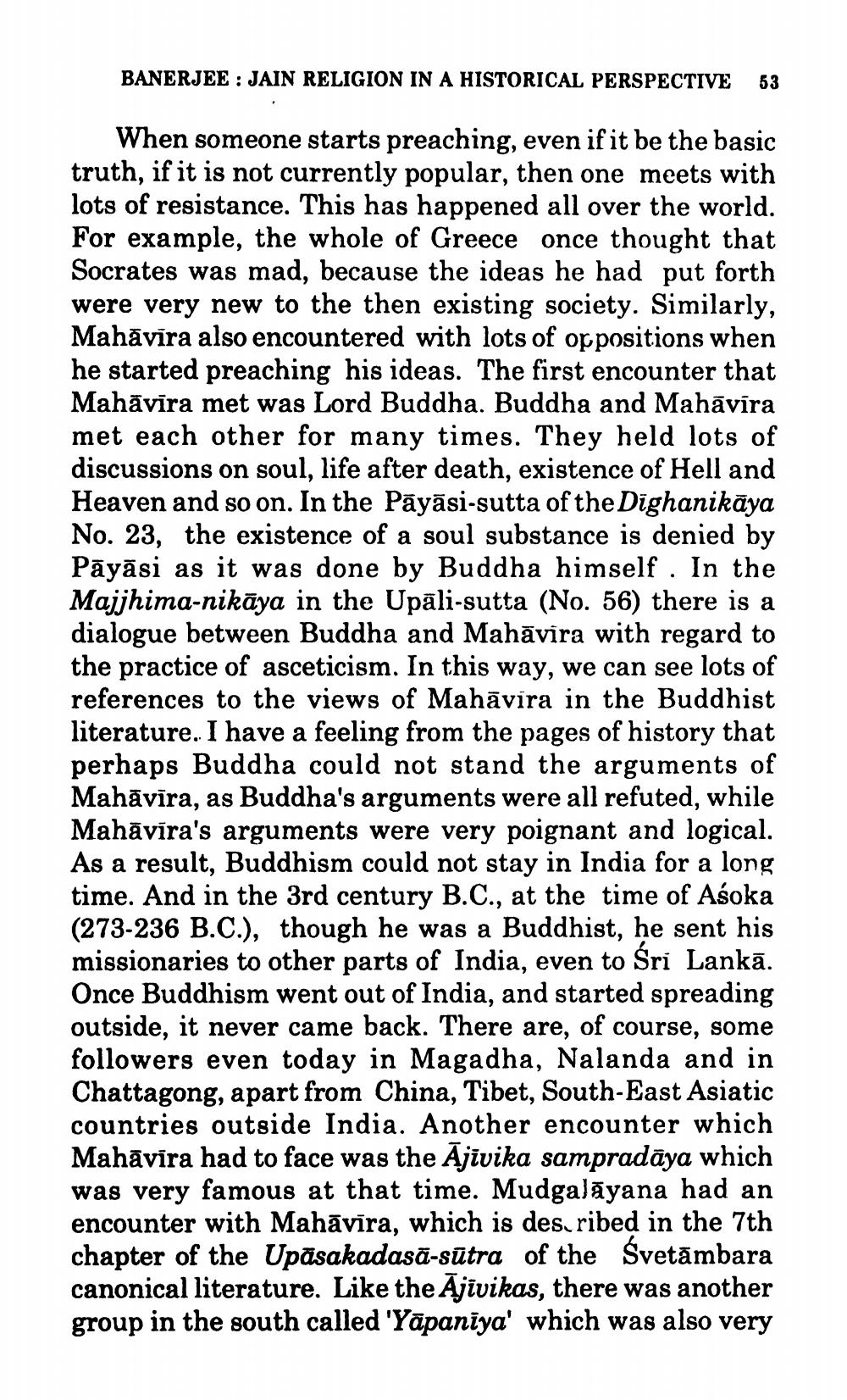________________
BANERJEE : JAIN RELIGION IN A HISTORICAL PERSPECTIVE 53
When someone starts preaching, even if it be the basic truth, if it is not currently popular, then one meets with lots of resistance. This has happened all over the world. For example, the whole of Greece once thought that Socrates was mad, because the ideas he had put forth were very new to the then existing society. Similarly, Mahāvīra also encountered with lots of oppositions when he started preaching his ideas. The first encounter that Mahāvīra met was Lord Buddha. Buddha and Mahāvīra met each other for many times. They held lots of discussions on soul, life after death, existence of Hell and Heaven and so on. In the Pāyāsi-sutta of the Dighanikāya No. 23, the existence of a soul substance is denied by Pāyāsi as it was done by Buddha himself. In the Majjhima-nikāya in the Upāli-sutta (No. 56) there is a dialogue between Buddha and Mahāvira with regard to the practice of asceticism. In this way, we can see lots of references to the views of Mahāvira in the Buddhist literature. I have a feeling from the pages of history that perhaps Buddha could not stand the arguments of Mahāvīra, as Buddha's arguments were all refuted, while Mahāvīra's arguments were very poignant and logical. As a result, Buddhism could not stay in India for a long time. And in the 3rd century B.C., at the time of Asoka (273-236 B.C.), though he was a Buddhist, he sent his missionaries to other parts of India, even to Sri Lankā. Once Buddhism went out of India, and started spreading outside, it never came back. There are, of course, some followers even today in Magadha, Nalanda and in Chattagong, apart from China, Tibet, South-East Asiatic countries outside India. Another encounter which Mahāvīra had to face was the Ājivika sampradāya which was very famous at that time. Mudgalāyana had an encounter with Mahāvīra, which is des, ribed in the 7th chapter of the Upāsakadasā-sūtra of the Svetāmbara canonical literature. Like the Ājīvikas, there was another group in the south called 'Yapaniya' which was also very




